Douglas Coupland, Otani’s monsters and navigating Emily Carr’s verdant abyss
Douglas Coupland admits to “liking gift shops more than what’s on the walls of the museum, usually.” The Vancouver-raised writer—the man who literally wrote the book on Generation X—wears his references on his Champion sweatshirt sleeve, and they’re our references: Bowie, Pop Art, Staples. He swims in the same cultural backwaters we all do, ceaselessly borne to the past. For his “1:1 Artists Select” show, now at Vancouver Art Gallery, Coupland was asked to choose one artist’s work from the 12,000 pieces in the gallery’s archives and run with it. He chose Roy Lichtenstein’s “Bull I-VI” from 1973, a series of six panels that deconstruct a very Warholian bull into abstracted fragments. Perfect for Coupland, who first saw the prints at the downtown gallery in 1951. It somehow made nature and cows—which he was surrounded by, growing up—more interesting. Abstraction was the key.
“I’ve been Pop ever since. And once you’re Pop, you can never look at the world the same way again,” he says in a video for the exhibit. “I liked Warhol—the car crashes, whatever. But Lichtenstein seemed to squish all of 20th century art into six panels.”
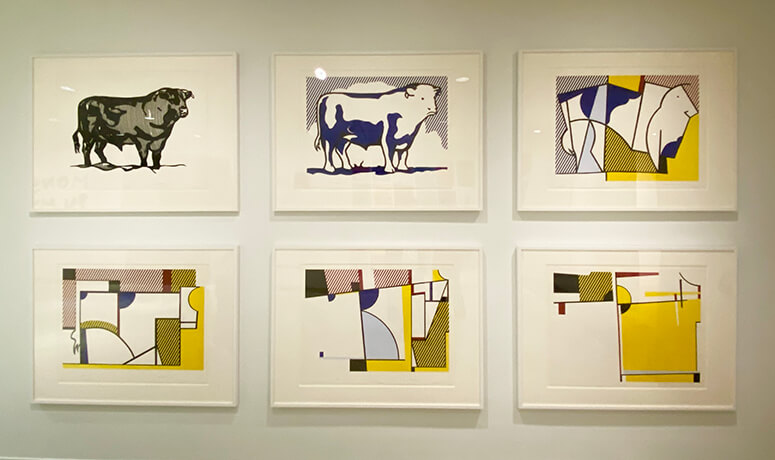
“1:1” is the gallery’s ongoing pairing of one homegrown artist with another, and Coupland became bigger than Canada with his series of novels and books that detail his generation’s obsessions. Born in 1961—just in time for Gen-X—even his book titles are pop culture nods: from Girlfriend in a Coma to McJob to Worst. Person. Ever. Clearly, language as signifier is key to his work, and his panels for the Vancouver Art Gallery show expand on an earlier exhibit, “everywhere is anywhere and anything is everything” (2014) that printed up his reflections on the digital culture on large Post-It-type panels, using “Lockout font, sans serif, just the kind of colors you’d pick out at Staples.” But shoved up on a wall opposite the Lichtenstein prints, they resonate eerily: “I MISS MY PRE-INTERNET BRAIN.” “DEMOCRACY SEEMS INADEQUATE TO DEAL WITH THE PRESENT.” “TOO MUCH FREE TIME IS A DISASTER.” “OFFLINE = LONELINESS.”
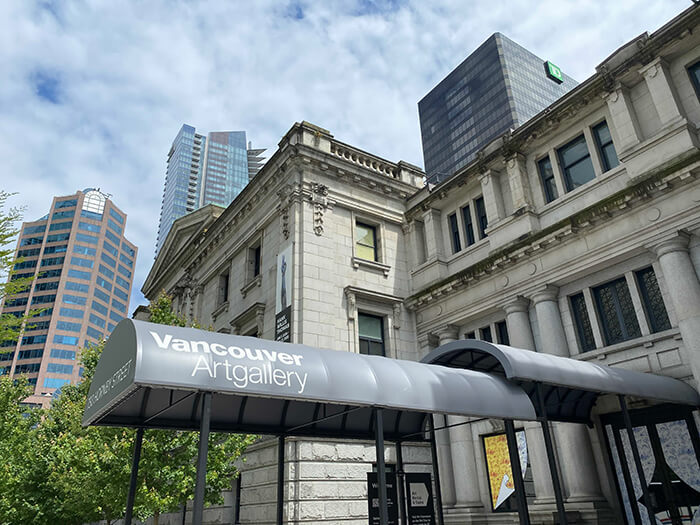
They reflect us, in a bovine-stare way, and how we choose to absorb culture.
“It’s trying to take a lot of information from all aspects of culture and squish it into one statement,” he says, and the connection with Lichtenstein is “reduction, editing, abstraction, until you get something at the end that makes you think hard about what came before.”
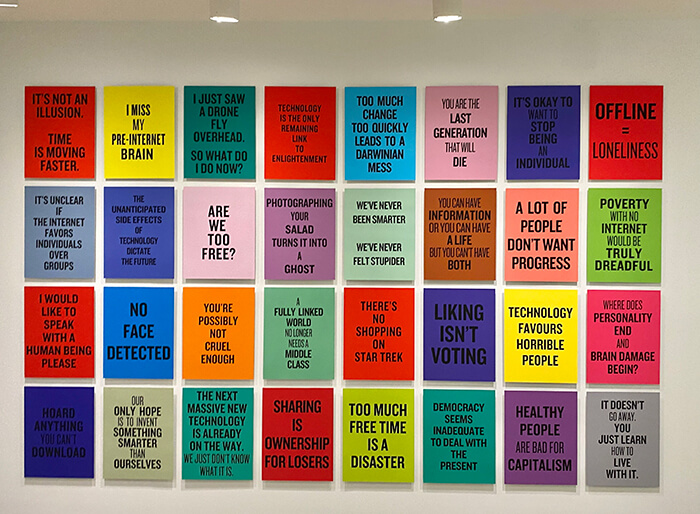
Reflecting on the colored slogans, Coupland also built an abstract scale model of himself made of stacked colored Legos. That’s up on the wall, too. “Nothing makes something look like art more than plexiglass around it,” he says with a smile.
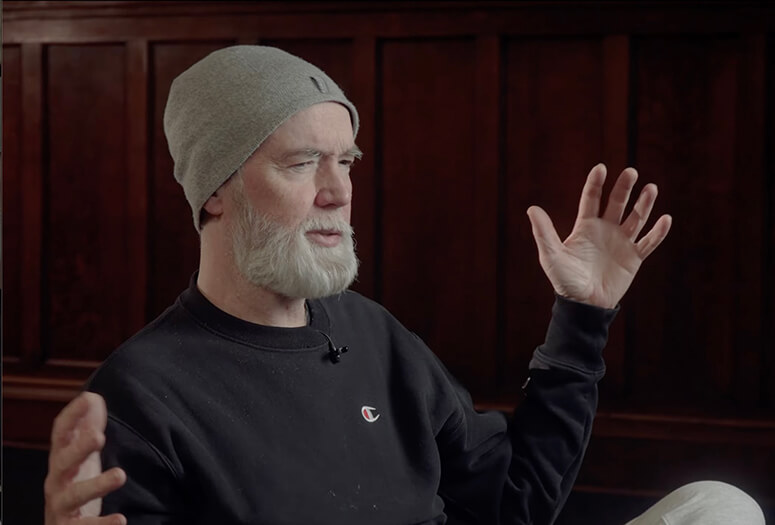
Art, for Coupland, seems to be about marking time. He mentions Bowie, how his “Ziggy Stardust” phase only lasted 18 months. “Yet it was a placeholder for a decade. Maybe that’s one of the functions of art: it’s a timestamp.”
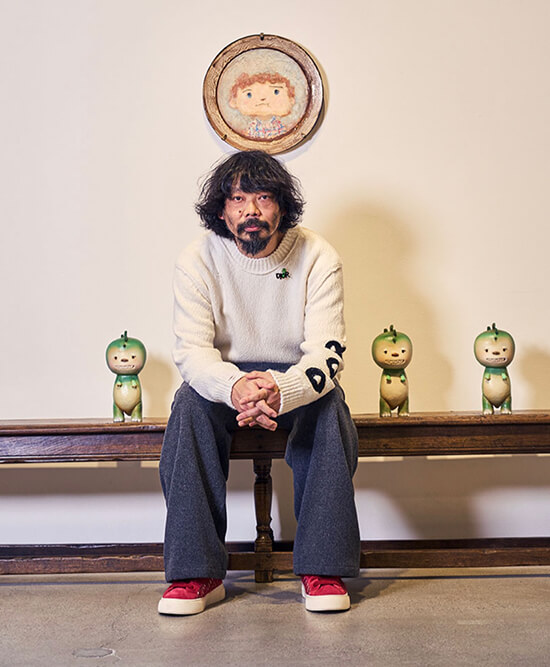

Elsewhere in Vancouver Art Gallery is the ongoing show “Otani Workshop: Monsters in My Head.” The Japanese artist gets his first solo show here, presenting ceramic vessels and vestiges from his own dream imagery. Clay, wood, faura—bits of nature foraged from here and there— play into this horizontal display of Otani’s interior fragments. His beings resonate with a comical twinkle; if they’re monsters, they’re mostly the friendly, inviting kind. Little twists seem to echo Disney, E.T. (especially in his nostalgia-driven paintings) while the ceramic works seem dredged up out of the earth, or directly from the subconscious, unmediated. Be not afraid. Otani is at work.
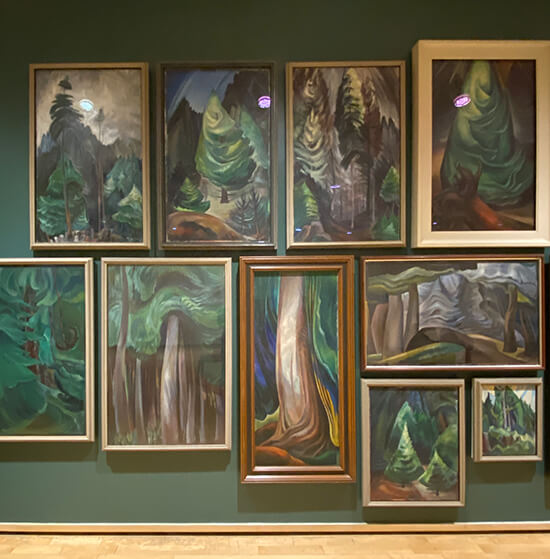
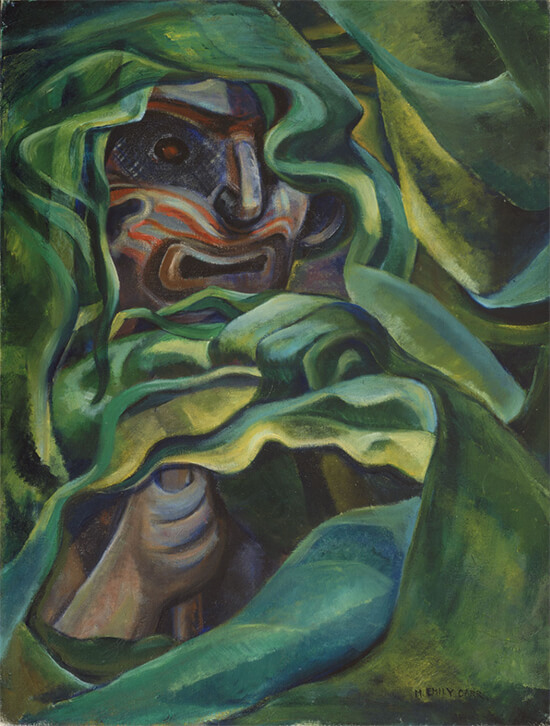
Up on the fourth floor, almost hidden from view, is “Navigating an Impenetrable Landscape,” a showcase of Emily Carr’s work from the 1920s onwards. Born in British Columbia in 1871, Carr spent years absorbing First Nation culture and the nature surrounding her. In this loose arrangement of her work, Carr has latched onto a series of tones and images that render nature inviting, yet somehow foreboding at the same time. Those thick, green forests invite you in, yet hold you back at the surface somehow. Later works show open landscapes, a reflection on clear-cut logging; other works here include totem pole figures, buried figures, and there’s a subconscious strain of conflating nature with indigenous culture that meets the viewer head-on, facing off the intrusive gaze with a stare back from a verdant abyss.
***
All exhibits ongoing at Vancouver Art Gallery, 750 Hornby Street, Vancouver, BC. Visit https://www.vanartgallery.bc.ca/.



